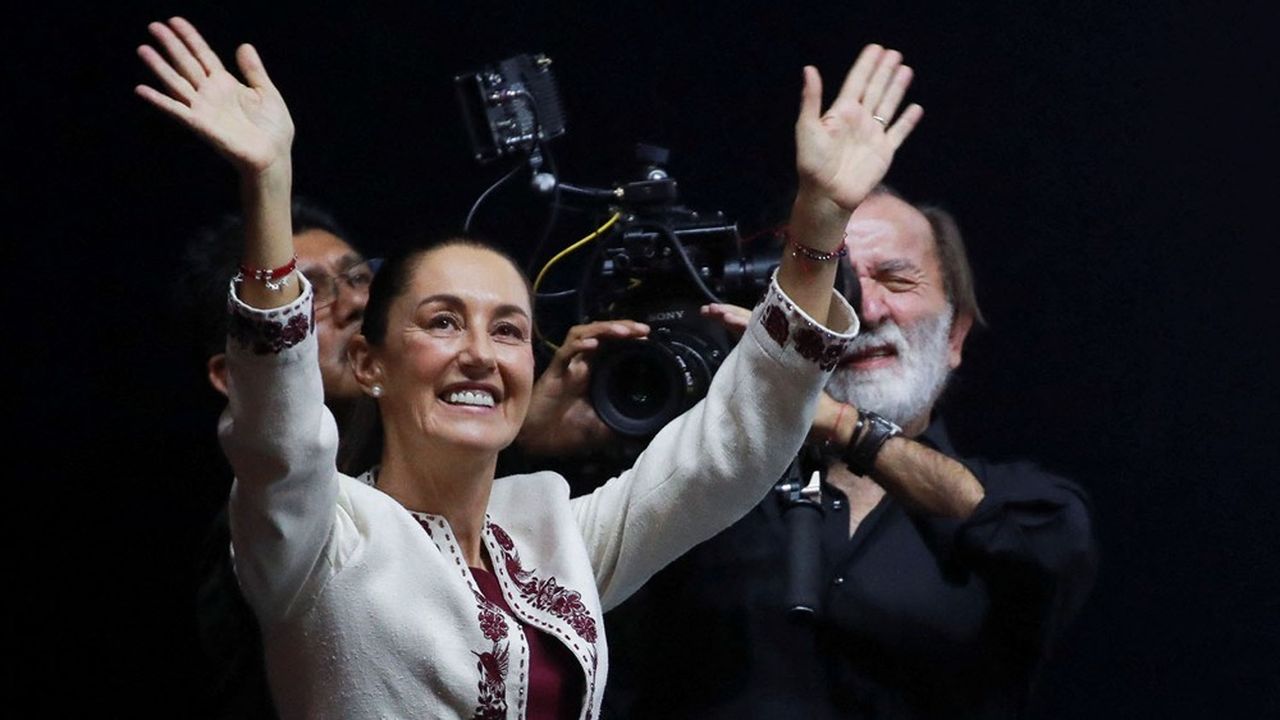
Less than a month before taking office, Mexico’s next president, Claudia Sheinbaum, inherits an economic climate marked by uncertainty and a currency that has been buffeted by markets. The rating agency Fitch Ratings, which recently downgraded the country’s sovereign rating (BBB-), lists its fears for Mexico in a report.
They are linked to the consequences of the reforms carried out urgently by President AMLO before his departure and to the fiscal situation he leaves behind: “the budget deficit will widen considerably this year,” the document indicates. The public deficit should approach 6% of GDP at the end of 2024, a record level that places it second in Latin America behind Brazil. However, Rodolfo Navarrete, analyst and director of the brokerage firm Vector wants to be reassuring: “If we look at all the macroeconomic indicators, Mexico is solid but the government of Claudia Sheinbaum will have to show more transparency to reassure investors and allow them to understand its intentions.”
Necessary reforms
Many experts point to the need to take measures to consolidate the Mexican economy, starting with tax reform. Adrian de la Garza, an economist at Cemex and member of the expert group “Mexico cómo vamos?” (Mexico, how are we doing?), believes that it is essential to increase the level of revenues so that the Mexican state can “continue to support its social policy while trying to reduce the pressure on the country’s public finances.”
The new administration will indeed have to manage some dark files, such as that of Pemex. The national oil company has a debt of more than 100 billion dollars that Claudia Sheinbaum has promised to partially bail out. Strengthening the energy sector, remedying the recurring electricity and water shortages in certain regions of the country, also represents a major challenge according to the expert, to “materialize the expectations related to nearshoring” – or local relocation.
The nearshoring map
In a context where foreign companies are moving their activities from Asia to the Americas to be closer to their market in the United States, Mexico has a card to play. So far the country has not been able to take full advantage of the phenomenon, due to a lack of adequate infrastructure. “These are problems left pending by the outgoing administration that the next government will have to face,” says Adrian de la Garza.
Investments will have to be made in physical infrastructure, services, research and intellectual training in Mexico, stresses José Ignacio Martínez Cortes, from the National Autonomous University of Mexico (UNAM). For this trade specialist, professor of international economics, this must be the mission of the future Minister of Economy, Marcelo Ebrard, in order to take advantage of “the great opportunity to develop the internal market and create dynamic demand in the country.”
The American Unknown
Finally, Claudia Sheinbaum will have to pay attention to Mexico’s ties with the United States. In November, Americans will choose the future occupant of the White House between Donald Trump and Kamala Harris. Whatever the result, Mexico and its economic strategy will have to adapt. Dependent on its North American neighbor, its leading trading partner with whom it conducts more than half of its foreign trade, the Mexican economy is dependent on good relations between the two countries.




